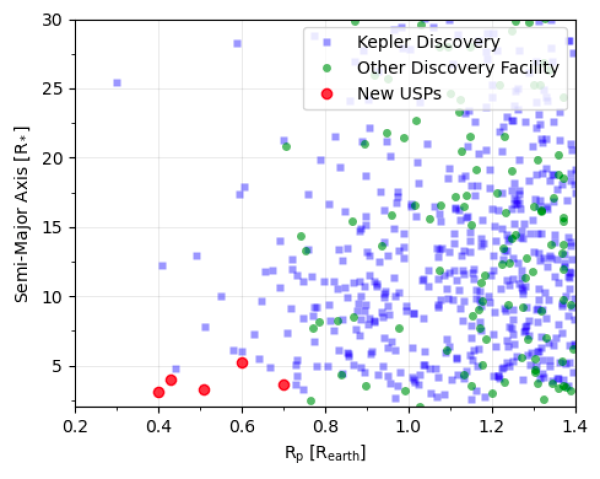October 14, 2011 byChinese Academy of SciencesAn international team led by Prof. Jian Ge at the Shanghai Observatory developed a deep learning algorithm combining GPU phase folding and convolutional neural networks, and discovered five ultra-short-period ultra-short-period stars with diameters smaller than the Earth and orbital periods shorter than 1 day in the stellar photometry data released by Kepler in 2017planetary.

Four of them are the smallest planets ever discovered closest to their host stars, similar to the size of Mars.This is the first time astronomers have usedAISearching for suspected signals and identifying real signals in one go. The results of the research were published in the Monthly Notices of the Royal Astronomical Society (MNRAS).
With link to the paper: https://academic.oup.com/mnras/article/534/3/1913/7762975
According to the report, after five years of hard work and innovation, the research team developed a new algorithm GPFC that combines GPU phase folding and convolutional neural networks for deep learning.The algorithm is about 15 times faster than the internationally popular BLS method in searching, and the accuracy and completeness of detection are each improved by about 7%, which improves the speed, accuracy and completeness of the Lingstar signal search.
The algorithm has been applied to Kepler's dataset and has identified five new ultra-short-period planets - Kepler-158d, Kepler-963c, Kepler-879c, Kepler-1489c and Kepler-2003b.
Among them, Kepler-879c, Kepler-158d, Kepler-1489c, and Kepler-963c rank first, second, third, and fifth, respectively, among the smallest ultrashort-period planets discovered to date.
Kepler-879c, Kepler-158d, Kepler-1489c, and Kepler-2003b are the closest small planets to their host stars with orbital radii within 5 stellar radii, demonstrating the advantages of the new algorithms in searching for faint transiting signals.
The existence of these ultrashort-period planets provides key clues for the study of the early evolution of planetary systems, planet-planet interactions, and the dynamics of star-planet interactions, including tidal forces and atmospheric erosion.Important for the study of planetary formation theories.
This result provides a new research approach for fast and efficient searches for lingering star signals in high-precision photometric observational data.Demonstrates the potential and promise of AI applications for probing weak signals in astronomical data..